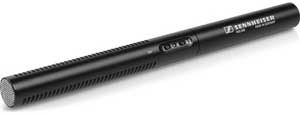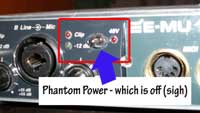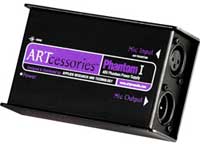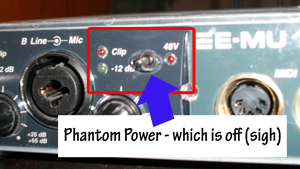
This is really exciting. Sennheiser announced their new shotgun mic, the Sennheiser MKE 600, very recently and you can be among the first to get one. It’s available at B&H, the first retailer to stock and ship the new mic. You can order yours by clicking here.
The reason I said it was so exciting was that I have stated that my “desert island mic” was the Sennheiser MKH 416 shotgun mic (see my review, along with audio and video samples here: https://www.homebrewaudio.com/sennheiser-mkh-416-shotgun-microphone-review/). But that one costs about a thousand clams. If the new MKE 600 sounds anywhere near as good as the MKH 416, it will be a fantastic value at just $399.95. Plus I can justify that to my wife a lot easier than the grand I’d have to drop for the 416;).
One feature of the MKE 600 that I like a lot is that it can use phantom power or a battery. That is VERY significant and convenient for a mic designed to be primarily used for video because most video cameras don’t have phantom power available on them for microphones. Heck, just finding a video recorder with an external mic hookup is hard enough. When I recorded the videos for the review of the 416, I had to use a separate phantom power unit plugged into a wall to power the mic. The MKE 600 also has a low-battery indicator so your audio won’t suddenly cut out on you in the middle of a shoot.
Again, you can find out more and order yours by clicking here.
Cheers!
 Recently I posted something called
Recently I posted something called  It is not at all uncommon (meaning I do this all the time!!) to plug the condenser mic in and get all ready to record only to find there is no sound coming through the mic because someone (me) forgot to turn on phantom power. You have been warned.
It is not at all uncommon (meaning I do this all the time!!) to plug the condenser mic in and get all ready to record only to find there is no sound coming through the mic because someone (me) forgot to turn on phantom power. You have been warned.
 Phantom power is not supernatural, nor is it anything to do with with Andrew Lloyd Weber (snicker). So that is what it isn’t. What it is can be – gasp what a surprise – a bit confusing and “techie” sounding when someone tries to explain it. I asked someone for 400 words on what phantom power is and below was the result. Hint: take a big hit on your coffer, soda or 5-Hour Energy drink before proceeding. I will put up a now-what-is-it-really-and-only-tell-me-what-I-need-to-know
Phantom power is not supernatural, nor is it anything to do with with Andrew Lloyd Weber (snicker). So that is what it isn’t. What it is can be – gasp what a surprise – a bit confusing and “techie” sounding when someone tries to explain it. I asked someone for 400 words on what phantom power is and below was the result. Hint: take a big hit on your coffer, soda or 5-Hour Energy drink before proceeding. I will put up a now-what-is-it-really-and-only-tell-me-what-I-need-to-know